When it comes to agile estimation, you can’t help but mention its basic principles: use relative estimation units (such as story points), promote detailed discussion of the content of user stories, form a consensus and commitment to the solution, and enhance the team through cohesive collaboration.
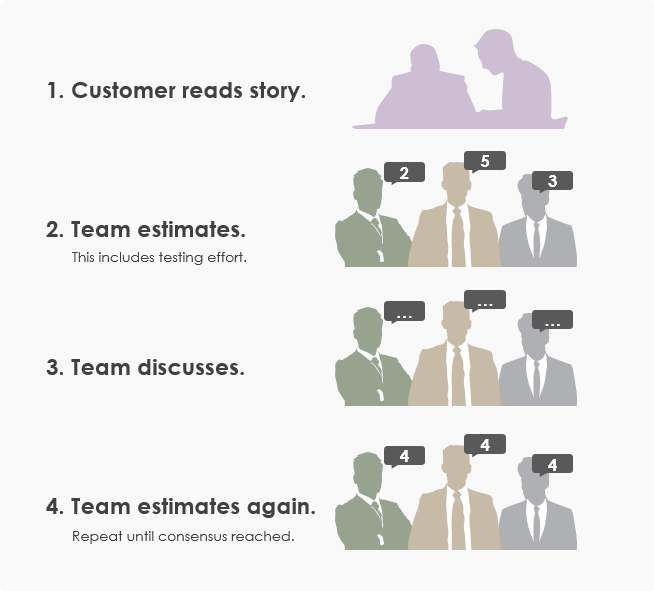
Many agile teams around me use “planning poker” to estimate story points. Although this method is popular, it also has its limitations.
For example:
- The function to be estimated is too large, and it is not easy to estimate with “planning poker”;
- 300 stories come out;
- The user story to be estimated does not have enough information for reference;
- The time is tight, there is no time to estimate the entire product demand list.
So, this article not only introduce the most popular agile estimation methods “planning poker”, but also 6 other agile estimation methods for fitting all your needs for user story estimation
1. Planning Poker
All participants use numbered playing cards to estimate the user’s story, anonymously vote when estimating, discuss if there is a big disagreement, and then vote again, until the entire team reaches a consensus on the accuracy of the estimate. The use of planned poker has limitations and is best suited for small teams (5–8 people) and a small number of user stories (up to 10).
Tip: although it is not a rule, it is strong advised to break down the user stories in the product backlog no bigger than 13 points; so that your team can clearly understand the user stories to the level of details which can be comfortably estimated.
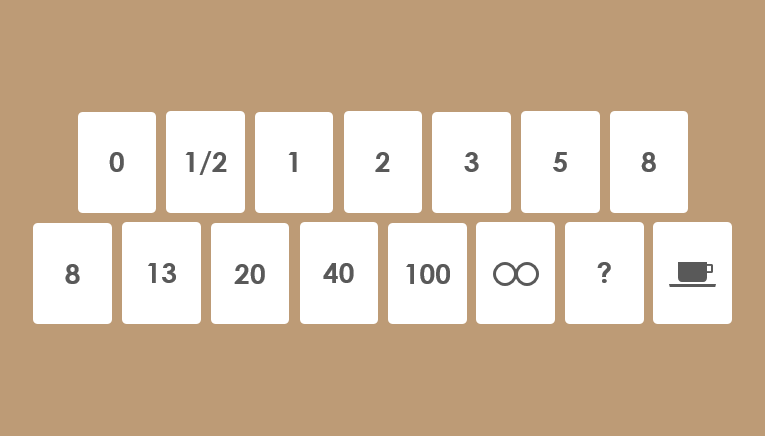
2. T-shirt size
Use the size of the T-shirt to estimate the size of the user’s story: XS, S, M, L, XL. The size of each size represents the need for an open and honest discussion. This method is quick and easy, and you can estimate the size of the product demand list in a bold way.
Tip:This method is suitable for estimating the massive demand list of large user stories, especially when several Scrum teams work around a product.
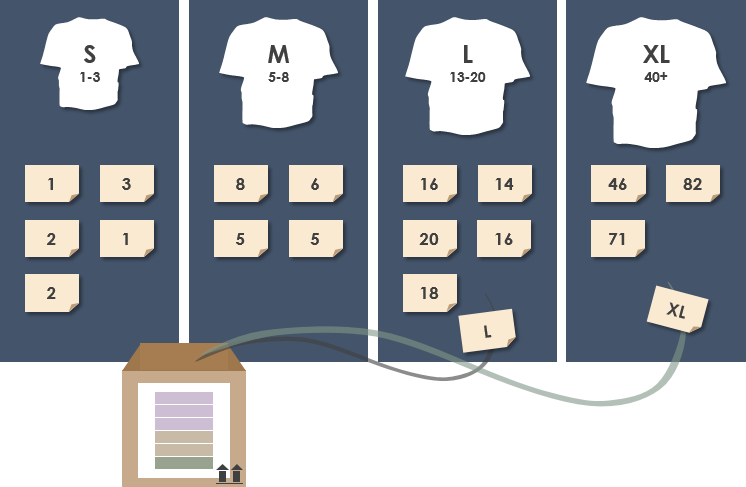
3. Dot Vote
This method is suitable for estimating small user stories, and the method itself is very simple and effective. “Dot voting” is a way of making decisions, but you can also use it to estimate user stories. The method is: each person is assigned a few post-it notes, free to choose which user stories to vote for. The more dots a user story gets, the more volume it represents.
Tip:This method can be used in both large and small teams, but you have to limit the number of estimated user stories.
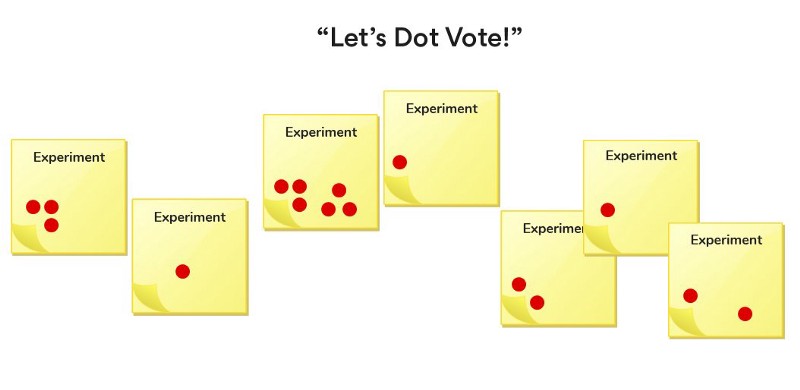
4. The Bucket System
Suppose you have a large number of user stories that need to be estimated, and you want to speed up the entire process. Actually, you’re looking for an estimate that is more efficient than planning poker, then the “bucket system could be a desirable choice.”
First, setup a few “buckets” in the sequential order of “planning poker card” Then, the team writes the user story to be estimated on the post-it note and puts it into the “bucket” estimate.
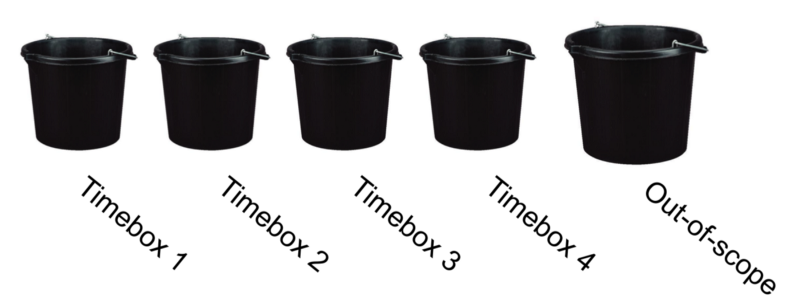
3. Three-Point Method
The 3 point estimate belongs to the time management knowledge area. It can also be used during Cost Estimation. The problem with single point estimates is that they are seldom correct. A three point estimate is a better estimate, compared to a single point estimate.
Single point estimate simply gives you a single number — for example,
Develop: How long will it take to complete the order process feature?
How reliable is this 5 days estimate? It will depend on the developer, and whether this task has been done before or not? If it is a routine task, and has been performed many times, a single point estimate may be the way to go. But if it is something never done, or is a new activity, or the engineer is new to this activity, this number may well be incorrect. In such cases, going for a three point estimate will give you more reliability.
Three point estimate looks at the most optimistic estimate (O), a most likely estimate (M), and a pessimistic estimate (Least likely estimate) or (L).
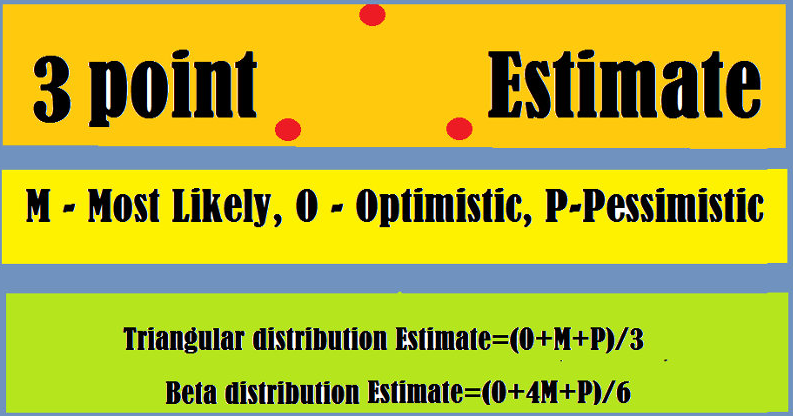
6. Affinity Estimation
Affinity estimation is to find the similarities of the user stories to be estimated. The task of the team is to group similar user stories. The best way to “find similarity” is to visualize the process and combine the subtotals into large groups.

Tip:This method works best in a small group of people and a small number of user stories, you have to assign different estimates to different groups.
7 Sorting Method
This approach allows you to have a relatively accurate judgment of the relative size of the user’s story. If a small group of experts do this, it will work best.
Here’s how: Put all user stories on a low-to-high tick label in any order, and each participant can move a user story on the scale, moving only one frame low or high for each move. Or give up a round. Repeat this process until all team members don’t want to move the user story or give up one round.

Tip:This sorting method can obtain an estimate of fine grain size, which is suitable for small groups of people and a large number of user stories.
Summary
The purpose of this article is to introduce you to the existence of these methods. Before daily use, you should try different methods based on your own user stories and the size of your staff.
If you are interested in these methods, please leave a message in the comments section. I can elaborate the method(s) in more details in a separate article.
Other Articles in Scrum Techniques and Artifacts
- What are Scrum Artifacts?
- Definition of Done vs Acceptance Criteria
- What is Definition of Ready in Scrum?
- How to Write a Sprint Goal?
- What is Product Backlog in Scrum? Who Responsible for It?
- How to Refine Product Backlog?
- What is Sprint Backlog in Scrum?
- How to Prioritize Product Backlog Using MoSCoW Method
- How to Prioritize Product Backlog Using 100 Points Methods?
- What is a Sprint Goal in Scrum?
- What is Burndown Chart in Scrum?
- What is the Role-Feature-Reason Template?
- Sprint Increment vs Potential Shippable Product vs MVP vs MMP
- Write SMART Goals & INVEST for User Stories
- What is DEEP in Product Backlog?
- How to Write Product Vision for Scrum Project?
- How to Use Scrum Board for Agile Development?
- Who Create Product Backlog Items or User Stories in Scrum?
- What is Agile Estimation?
- What is Story Point in Agile? How to Estimate a User Story?

